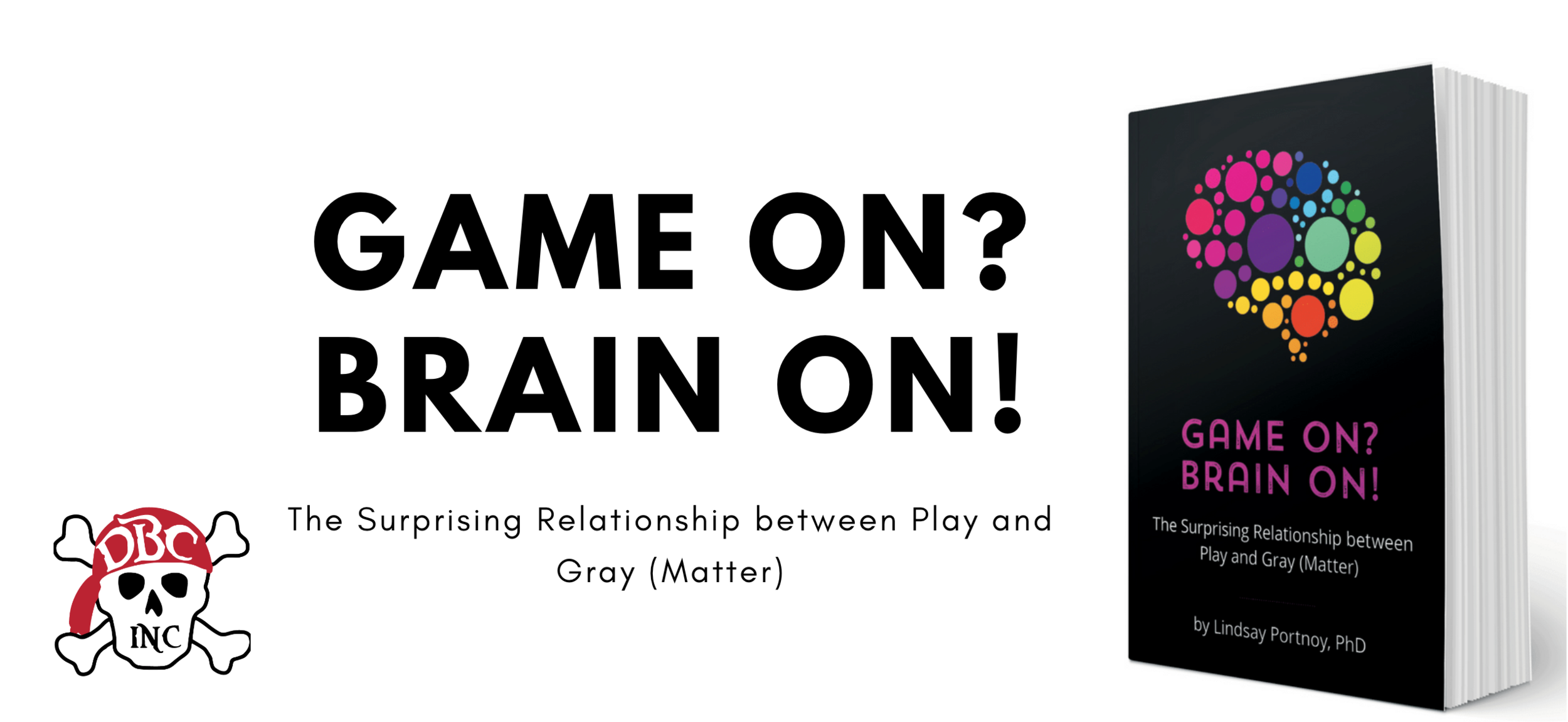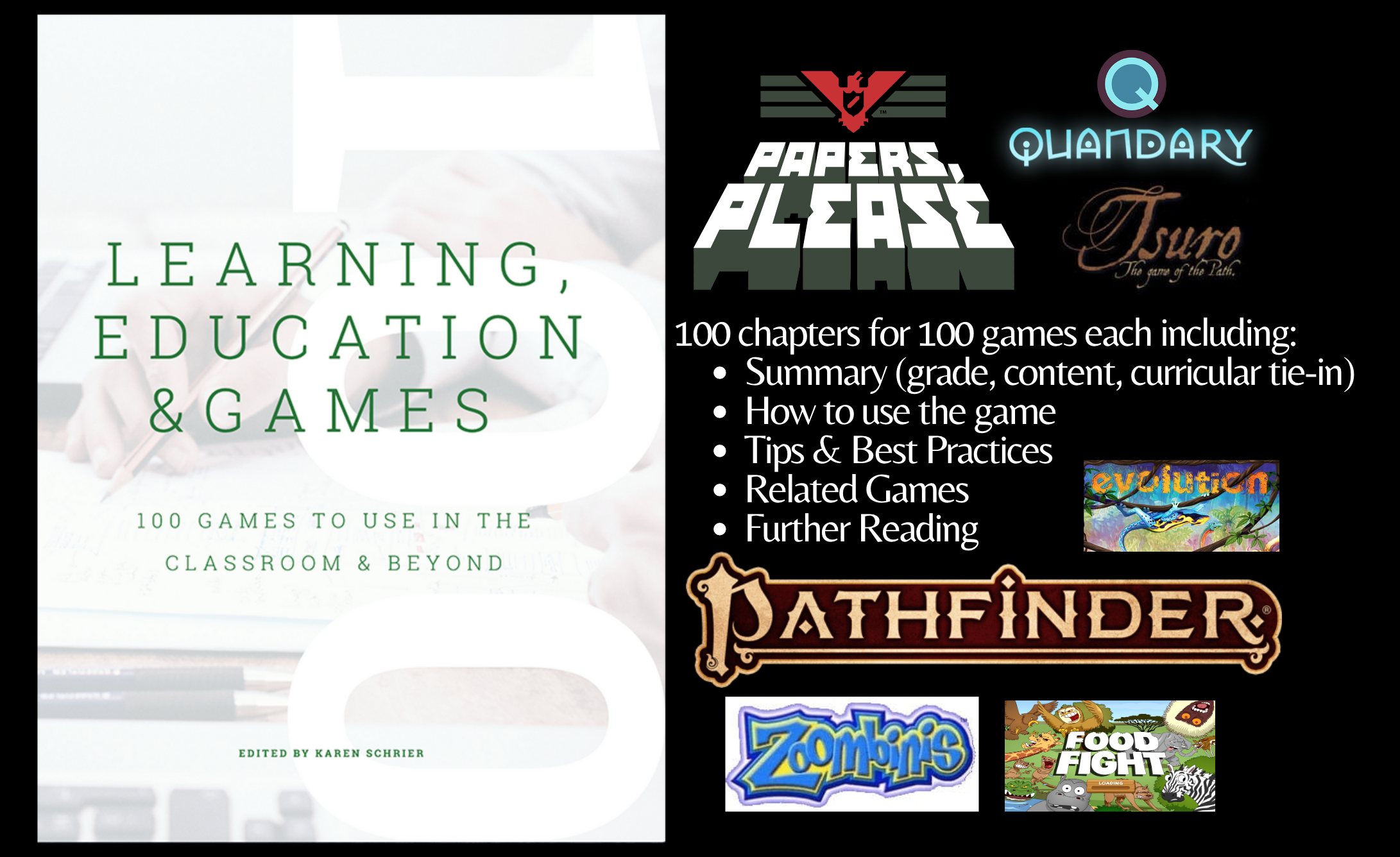Get in the game!
Welcome to #GameOnBrainOn! In these pages I’ll share some some of my most favorite level ups from the book in images I’ve designed especially for YOU!
While we all learn through play, not everyone has infused the power of play into classrooms or living rooms (or board rooms for that matter) in ways that inspire imagination, ignite conversation, and tap into the innate curiosity we all possess.
That all changes NOW!
Get ready to learn how games and play increase knowledge retention (chapter 6), improve collaboration (chapter 4), and help us connect more deeply with one another (chapter 5), among so many other important benefits of games and play.
Within the pages of the book are resources for finding games to play in classrooms or living rooms but I’ve also hidden some Easter eggs in these pages including this clever compendium of content called Learning, Education & Games: 100 Games to Use in the Classroom & Beyond.
But don’t stop there, you can visit places like Board Game Geek to find reviews of literally every game under the sun or get inspired to play in new ways while together or apart in this fun piece from Parade.
And if YOU find something fun and exciting in your travels on the world wide web please drop a line and let me know. Who knows, it may be next week’s Easter egg?!
One last thing before you press play…
…earn some experience points (XP) by getting a little metacognitive about your own experiences with games and play:
What is the first game you remember playing as a child? What was it about that game that you loved? How is that game similar to or different from the games your kids play today? What is it about those games that you think your kids love so much?
What kinds of decisions did you have to make when playing games as a child? What kinds of decisions do your kids have to make in the games they play now?
How did you ‘win’ the games you played as a child? How do your kids ‘win’ the games they play now?
How did playing games as a kid allow you to take risks? How does playing games today allow our kids to take risks?
What do you notice about the way kids ‘are’ during play and the way they are during class?


